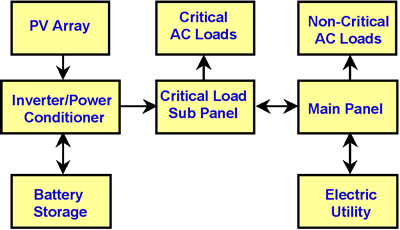
![]()
Photovoltaic systems have a number of merits and unique advantages over conventional power-generating technologies. PV systems can be designed for a variety of applications and operational requirements, and can be used for either centralized or distributed power generation. PV systems have no moving parts, are modular, easily expandable and even transportable in some cases. Energy independence and environmental compatibility are two attractive features of PV systems. The fuel (sunlight) is free, and no noise or pollution is created from operating PV systems. In general, PV systems that are well designed and properly installed require minimal maintenance and have long service lifetimes.
At present, the high cost of PV modules and equipment (as compared to conventional energy sources) is the primary limiting factor for the technology. Consequently, the economic value of PV systems is realized over many years. In some cases, the surface area requirements for PV arrays may be a limiting factor. Due to the diffuse nature of sunlight and the existing sunlight to electrical energy conversion efficiencies of photovoltaic devices, surface area requirements for PV array installations are on the order of 8 to 12 m^2 (86 to 129 ft^2) per kilowatt of installed peak array capacity.
Q: Can photovoltaic systems operate normally in grid-connected mode and still operate critical loads when utility service is disrupted?
A: Yes, however battery storage must be used. This type of system is extremely popular for homeowners and small businesses where a critical backup power supply is required for critical loads such as refrigeration, water pumps, lighting and other necessities. Under normal circumstances, the system operates in grid-connected mode, serving the on-site loads or sending excess power back onto the grid while keeping the battery fully charged. In the event the grid becomes de-energized, control circuitry in the inverter opens the connection with the utility through a bus transfer mechanism, and operates the inverter from the battery to supply power to the dedicated loads only. In this configuration, the critical loads must be supplied from a dedicated sub panel. Figure 8 shows how a PV system might be configured to operate normally in grid-connected mode and also power critical loads from a battery bank when the grid is de-energized.

Figure 1. Diagram of a grid-connected critical power supply system.
